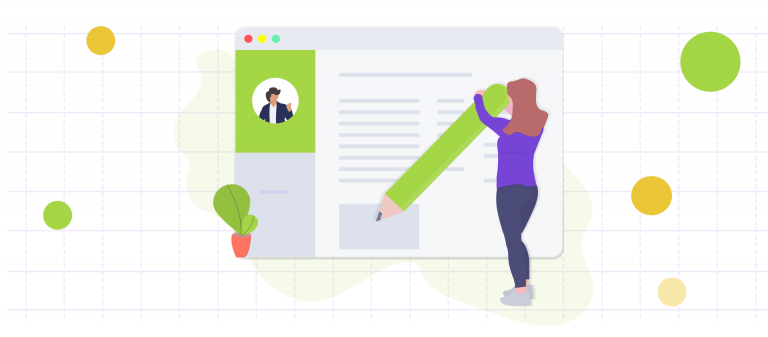From Prospecting to Stewardship: The Complete Guide to Moves Management for Nonprofits

Moves management is a fundraising strategy that helps nonprofits build stronger relationships with donors and prospects by breaking down the fundraising process into a series of "moves" or actions. These moves can include anything from prospecting and cultivation to solicitation and stewardship. From recurring donors to major donors, moves management is applicable to all supporter types!
At its core, donor moves management is all about treating donors as individuals and building authentic donor relationships with them over time. By tracking and analyzing their interactions with your organization, you can identify their interests, preferences, and giving capacity, and tailor your engagement and fundraising strategies accordingly.
But moves management isn't just about raising more money (although that's certainly a big part of it!). It's also about creating a positive donor experience, building trust and transparency with first-time donors, and ultimately making a greater impact on the causes you care about.
So, whether you're new to moves management or a seasoned pro, we've got you covered. In this blog, we'll take you through every step of the moves management process, from prospecting to stewardship, and provide you with practical tips, and best practices along the way. Are you ready to become a moves management master? Let's get started!
What is Moves Management?
As mentioned, moves management is a fundraising strategy that helps you guide your donors and prospects through every phase of the donor journey. Some of the key concepts of moves management include:
Individualization
Moves management allows you to treat all of your donors as individuals and understand their unique interests, preferences, and giving capacity. With a deeper understanding of your individual donors, you can segment them and create tailored and personalized messaging for them, which is proven to increase revenue.
Relationship Building
When you better understand your donors, it allows you to foster a sense of trust, transparency, and partnership with donors over time. This keeps them close to your cause and can boost donor retention.
Metrics Tracking
Metrics tracking during the moves management process means tracking and analyzing donor interactions with your organization. This helps you to identify patterns, opportunities, and areas for improvement.
Donor Journey Mapping
At its heart, moves management is all about mapping out a clear path for the donor life cycle and eventual solicitation, and tracking progress along the way. It also allows you to see what phase of the donor journey every contact in your database is in so that you can accurately forecast your revenue.
Stewardship
Moves management allows you to properly recognize and thank donors for their contributions, and provide opportunities for continued engagement and involvement with your organization.
Collaboration
Gone are the days of working in silos. Moves management encourages cross-departmental collaboration and communication to ensure a cohesive moves management approach across your organization.
Data-Driven Decision Making
Using data and insights to inform your moves management strategy is what sets it up for success. Continuously testing and refining your approach based on results of your data analysis is the secret sauce to moving your donors through their journeys.
What Are The Benefits of Moves Management?
Moves management can offer a range of benefits for nonprofits including improved donor retention, increased fundraising revenue, and stronger donor relationships with supporters. Here are some of the key benefits of moves management:
Increased Donor Retention
By implementing moves management strategies, you can help to build deeper, more personalized relationships with your donors. This can lead to increased major donor loyalty, repeat giving, and a higher overall donor retention rate.
Greater Giving Potential and Larger Gifts
By understanding your donors' interests, preferences, and giving capacity, you can tailor your engagement and solicitation strategies to match their needs. This can lead to larger and more frequent gifts over time, as donors become more invested in your organization and its mission.
Improved Donor Relationship Management and Trust
By providing personalized attention and engagement opportunities to your donors, you can help to build a stronger sense of trust and partnership with your supporters. This can lead to increased donor satisfaction, improved donor experiences, and a deeper sense of connection to your organization.
More Effective Fundraising Strategies
By tracking and analyzing donor interactions with your organization, you can gain valuable insights into which strategies are most effective for engaging and soliciting donations. This can help you to optimize your fundraising efforts over time and achieve better results.
Positive Donor Experience
Moves management can help to encourage donors and create a positive donor experience by providing a clear path for donor engagement and stewardship. By making donors feel valued and appreciated, you can encourage continued support and involvement with your organization over time.
The Moves Management Stages
Moves management involves breaking down the fundraising process into five distinct stages, each of which is designed to help you build stronger relationships with your donors and achieve better fundraising results. The five moves management steps are:
1. Identification
The first stage of moves management is identifying potential donors who may be interested in supporting your organization. For example, you can use your organization's donor database to identify current donors who have made gifts in the past or use online research to find individuals who have supported similar causes in the past.
2. Qualification
The next stage is qualification, where you determine whether potential donors have the capacity and willingness to make a gift. For example, you could conduct a wealth screening of prospective donors to determine their giving capacity or conduct a survey to understand their interests and motivations.
During this phase, it's a good idea to use a CRM that integrates wealth screening tools into the database, such as Keela, so that you can gain a holistic view of your donors and best understand their capacity to give.
3. Cultivation
Donor cultivation strategies involve building relationships with donors over time (ie. cultivating donor relationships!). For example, you could invite donors to events, provide them with newsletters or updates about your organization's progress, and offer them volunteer opportunities. By keeping donors engaged and informed while managing the donor cultivation cycle, you can build trust and establish a deeper connection with them.
4. Solicitation
The solicitation stage involves making an ask for a donation. For example, you could send a direct mail appeal, make a phone call to a major donor, or use crowdfunding platforms to solicit gifts from repeat donors or a larger group of supporters. By tailoring your solicitation approach to each donor's interests and preferences, you can increase your chances of success.
5. Stewardship
The final stage of the moves management cycle is stewardship, which involves thanking donors for their gifts and providing opportunities for continued engagement. For example, you could send personalized thank-you letters, recognize donors on your website or social media channels, or invite them to exclusive donor events. By showing your appreciation and keeping donors engaged, you can build stronger relationships with them and increase their likelihood of making future gifts.
Implementing Moves Management in Your Nonprofit
If you're ready to implement moves management in your nonprofit, here are some steps you can take to get started:
1. Set up a moves management system
The first step is to establish a moves management system that works for your organization. This can involve identifying the key stages of the moves management process, establishing clear roles and responsibilities for your fundraising team, and creating a system for tracking and analyzing donor interactions.
2. Identify and segment your donors
The next step is to identify and segment your donors based on their interests, giving capacity, and engagement level. This can involve conducting wealth screenings, analyzing major donor behavior data, and segmenting donors based on their interests or demographics.
3. Tailor your engagement strategies
Once you've identified and segmented your donors, you can tailor your engagement strategies to match their preferences and needs. This can involve sending personalized communications, providing exclusive engagement opportunities, and using targeted marketing campaigns to reach specific segments of your major donor base.
4. Track and analyze donor interactions
To make the most of your moves management system, it's important to track and analyze donor interactions over time. This can involve using a donor management system to track donor behavior data, conducting regular recurring donor surveys, and analyzing the results of your fundraising campaigns to identify areas for improvement.
Best Practices for Moves Management
There is no one right way to build an effective moves management strategy at your organization, but there are a few best practices that can help guide you along the way. Here are a few best practices for moves management.
1. Focus on donor engagement
At the heart of moves management is a focus on donor engagement. By creating meaningful opportunities for donors to connect with your organization and its mission, you can build stronger relationships with your supporters and increase the likelihood of future giving.
2. Personalization is key
To be effective, moves management must be personalized to each donor's interests, preferences, and giving capacity. By taking the time to understand each donor's unique needs, you can tailor your engagement and solicitation strategies to match their interests and increase their likelihood of giving.
3. Relationship building takes time
Building strong relationships with your donors takes time and effort. Effective moves management involves creating a clear path for donor engagement and stewardship and providing meaningful opportunities for involvement and recognition.
4. Data is essential
To optimize your moves management strategies, it's essential to use data to inform your decisions. This can involve tracking donor behavior data, analyzing the results of your fundraising campaigns, and conducting surveys to better understand donor preferences and needs.
5. Communication is critical
Effective moves management also involves clear and consistent communication with your donors. This can involve regular updates on your organization's progress, personalized communications, and providing opportunities for feedback and input from donors.
Tools and Technology for Moves Management
If you're looking to improve your nonprofit's moves management strategies, technology can be a powerful tool to help streamline your efforts and achieve better results. Here's an overview of how tech solutions and moves management software can help nonprofits with moves management, as well as the five most important tools you should be using:
1. Donor management software
Donor management software, such as Keela, is essential for tracking donor interactions, analyzing donor behavior data, and managing donor engagement and stewardship activities. With features such as contact management, donation tracking, and email marketing, these tools can help you build stronger relationships with your donors over time.
2. Wealth screening tools
Wealth screening tools can help you identify donors with the capacity to make major gifts, allowing you to tailor your engagement and solicitation strategies to match each donor's capacity..
3. Analytics tools
Analytics tools can help you track and analyze donor behavior data, identify areas for improvement, and gain valuable insights into donor behavior that can inform future engagement and solicitation strategies.
4. AI-powered solutions
AI can be a powerful tool for nonprofits looking to improve their moves management strategies. With AI-powered solutions, you can use machine learning algorithms to analyze donor behavior data and make personalized engagement and solicitation recommendations based on donor insights. By predicting which donors are most likely to make a major gift, identifying which engagement strategies are most effective for each donor segment, and optimizing email marketing campaigns to improve engagement and giving, you can achieve better results with less effort..
5. Automation tools
With automation tools, you can set up workflows to automatically manage donor interactions, track donor behavior data, and manage engagement and stewardship activities. This can help you save time and resources while ensuring that you don't miss any important opportunities to engage with your donors. Automation tools can help you optimize your moves management fundraising strategies and achieve your organization's fundraising goals more efficiently.
To integrate these moves management tools into your fundraising strategies, it’s important to create a clear plan for how you’ll use each tool to achieve your fundraising goals. This can involve setting up automated workflows, establishing clear roles and responsibilities for your fundraising team, and tracking and analyzing the results of your fundraising campaigns over time.
Keela can help any organization set up an effective moves management strategy. With donor tracking, effortless segmentation, automated donor journeys, AI-powered donation forms, and more, Keela can support your organization with every phase of the donor journey. There’s a reason why Keela’s clients raise up to 46% more in their first year with Keela!
Conclusion
In conclusion, moves management is a critical strategy for nonprofits looking to build strong relationships with their donors, increase giving potential, and achieve better fundraising results over time. By focusing on donor engagement, personalization, relationship-building, data analysis, and communication, you can create a clear path for donor engagement and stewardship that leads to long-term success. By leveraging technology solutions such as donor management software, wealth screening tools, analytics tools, AI-powered solutions, and automation tools, you can streamline your moves management efforts and achieve even better results.
At the end of the day, moves management is about building meaningful connections with your donors, and creating opportunities for them to make a real impact on the causes they care about. With the right strategies and tools in place, you can achieve fundraising success and make a lasting difference in the world.
.svg)



